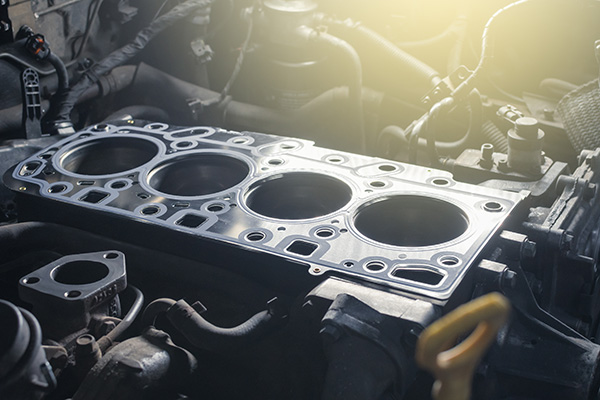
Engine overheating is a common concern among car owners, and for good reason. Not only can it leave you stranded on the side of the road, but it can also lead to serious engine damage. A blown head gasket is one of the most critical issues linked to overheating. But how exactly does overheating cause a head gasket to fail? We'll explain the details to understand this crucial aspect of engine health.
Understanding the Head Gasket's Function
The head gasket is an essential component of your engine, serving as a seal between the engine block and the cylinder head. Its primary function is to maintain the integrity of the combustion process by sealing the cylinders and preventing coolant and oil from mixing. This ensures that the engine runs efficiently with optimal performance. When the head gasket blows, it can no longer perform its sealing duties, leading to a host of engine problems.
How Overheating Damages the Head Gasket
Thermal Stress and Warping
One of the primary ways overheating can damage the head gasket is through thermal stress. When an engine overheats, the excessive heat causes the metal components to expand beyond their normal limits. This expansion can lead to the warping of the cylinder head and engine block, creating gaps that the head gasket can no longer seal effectively. As a result, the gasket fails, and coolant or oil leaks into the combustion chambers.
Pressure Build-Up
Overheating also increases the pressure within the engine's cooling system. This heightened pressure puts additional strain on the head gasket. If the pressure becomes too great, it can cause the gasket to blow, leading to leaks and further engine damage. The combination of thermal stress and pressure build-up creates a perfect storm for head gasket failure.
Signs of a Blown Head Gasket Due to Overheating
Persistent Overheating
If your engine continues to overheat even after addressing obvious issues like coolant levels or radiator problems, it could be a sign of a blown head gasket. The gasket's failure to seal can cause continuous overheating as the engine loses coolant and cannot maintain proper temperature regulation.
White Smoke from the Exhaust
White smoke from the exhaust is another telltale sign of a blown head gasket. When the gasket fails, coolant can leak into the combustion chambers and burn along with the fuel, producing thick white smoke. This is particularly noticeable during engine startup or acceleration.
Coolant and Oil Contamination
Check your oil dipstick for a milky, frothy substance – often referred to as "milkshake" oil. This indicates that coolant is mixing with the oil, a common result of a blown head gasket. Similarly, if you notice a loss of coolant with no apparent external leaks, it could be leaking into the engine.
Preventing Overheating and Head Gasket Failure
Regular Maintenance
Preventing overheating starts with regular vehicle maintenance. Ensure your cooling system is in top shape by checking coolant levels regularly and replacing coolant as recommended by your vehicle's manufacturer. Inspect hoses, the radiator, and the thermostat for any signs of wear or leaks.
Monitoring Temperature Gauges
Keep an eye on your vehicle's temperature gauge. If you notice the temperature rising above normal levels, pull over and let the engine cool down. Continuing to drive with an overheating engine can exacerbate the problem and lead to a blown head gasket.
Addressing Minor Issues Promptly
Don't ignore minor issues like small coolant leaks or a slightly elevated temperature reading. Addressing these problems early can prevent them from escalating into major issues like a blown head gasket. Regular inspections by a professional mechanic can also catch potential problems before they become serious.
Repairing a Blown Head Gasket
Assessing the Damage
If you suspect a blown head gasket, it's essential to have a professional assess the damage. We can conduct tests such as a compression test, a leak-down test, and a cooling system pressure test to confirm the diagnosis.
Replacement and Repairs
Repairing a blown head gasket involves replacing the gasket itself. In more severe cases, the cylinder head or engine block may need to be machined or replaced if they have been warped or damaged. This can be a costly repair, but sometimes, it's required to restore your engine's functionality.
Are you noticing signs of a blown head gasket? Get ahead of the problem. Bring your vehicle to Mint Auto Service today for professional diagnostics and repair services.